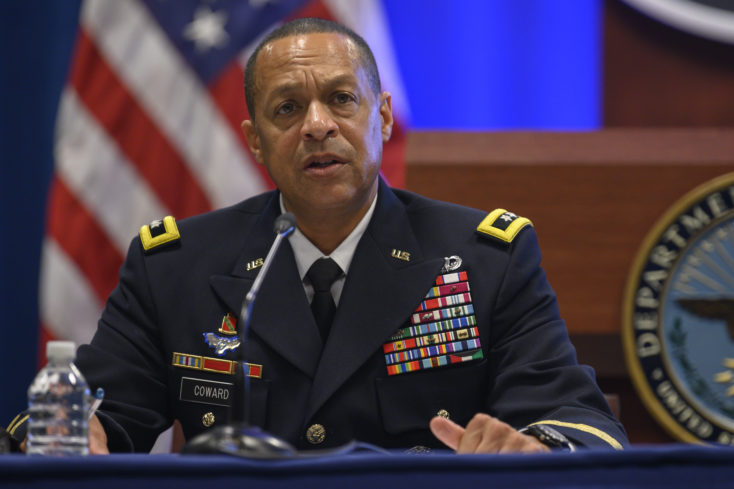
SEPT 30, 2021 | | DOD News
Secretary of Defense Lloyd J. Austin III said the findings of the newly published 2020 “DOD Annual Suicide Report” are “troubling.”
“Suicide rates among our service members and military families are still too high, and the trends are not going in the right direction,” he said in a statement.
The department will redouble its efforts to provide care and resources for all who need it and will work to reduce stigmas and barriers to care, he said.
“I feel these losses personally and mourn alongside the families and loved ones of those we have lost. Each suicide sends forth wave after wave of pain and grief. One such tragedy is too many,” Austin said.
The secretary reminded all personnel who need help to immediately seek it from a mental health professional, family, friends, a clergy member or a trained professional at the Veterans and Military Crisis Line or Military OneSource.

Army Maj. Gen. Clement S. Coward, acting executive director of the office of force resiliency for the undersecretary of defense for personnel and readiness, and Karin A. Orvis, director of the defense suicide prevention office, gave a press briefing on the report at the Pentagon today.
“Though our troops have shown, at times, a seemingly superhuman ability to achieve the impossible, they’re also still very much human,” he said. “None of us wants to see anyone suffer; we certainly do not want to see any service members or their loved one suffer either, especially in silence. So getting this right, preventing suicides is personal for all of us,” Coward said.
Prevention can be complex, Coward said. Scientific practitioners continue to research factors that contribute to an individual’s decision to attempt to die by suicide. The department is working to use best scientific practices, collect relevant evidence, analyze trends and so forth.
No two individuals are identical. No two life experiences are identical. They all exist in combination and can vary from one individual to another, he said. “That’s exactly why we need a comprehensive approach.”
Orvis said suicide remains a serious public health issue in the military and in the nation. “Every death by suicide is devastating, and has wide reaching impacts on family, friends and the broader community.”
Data and research indicate that suicide can be a sudden and an impulsive act, she said. “For some, it can be short as 10 minutes from thinking about suicide to acting on the spot. We know that simple actions such as reaching out and asking someone how they’re doing or personally connecting with someone face to face by phone or over social media can have a significant impact and potentially save a life.”
Orvis said that there was not a statistically significant change in military suicide rates between calendar year 2020 and calendar year 2019 that would indicate an increase related to COVID-19.
However, the department recognizes the impact of COVID-19 on the force, and continues to closely monitor potential impacts and take actions to provide support to military and family members, she added.
In calendar year 2020, 580 service members died by suicide, Orvis said.
For the active component in 2020, the suicide rate was 28.7 per 100,000 individuals. The active component suicide rates statistically increased from calendar year 2015 to 2020.
However, the 2020 suicide rate was statistically comparable to 2018 and 2019, she said.
The 2020 suicide rate was 21.7 for the Reserve and 27 for the National Guard per 100,000 individuals. Both the Reserve and National Guard suicide rates are statistically consistent from calendar year 2015 to 2020, meaning there’s no statistically significant difference in the suicide rate, she said.
After adjusting for age and sex differences between military and civilian populations, it was found that the military has comparable suicide rates for the entire U.S. population, she said, noting that the comparison was for 2019, the most recent year that national statistics were available.
Orvis noted that the primary method of suicide within the military is by firearm, followed by hanging and other methods. Over 87% of suicide deaths by firearm were from personally-owned firearms as opposed to military issued firearms.
“While the presence of a firearm does not cause someone to be suicidal, research tells us that storing a loaded firearm at home increases the risk of dying by suicide up to four to six times,” she said.
Personnel who need help should visit www.militaryonesource.mil, call 800-342-9647, or chat online with the Veterans and Military Crisis Line: www.veteranscrisisline.net, call 800-273-8255 (press 1) or text 838255. Confidential support is available 24/7.







